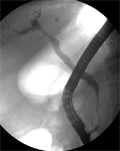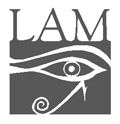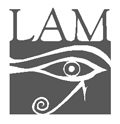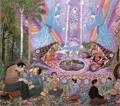The eLitMed.hu medical portal uses computer cookies for convenient operation. Detailed information can be found in the Cookie-policy.
Lege Artis Medicinae - 2006;16(06)
Content
[AUTOIMMUNE PANCREATITIS - AN UNDERDIAGNOSED DISEASE?]
[Autoimmune pancreatitis is a recently recognized type of chronic pancreatitis that is clearly distinct from alcoholic chronic pancreatitis. Its clinical symptoms include jaundice, abdominal pain, weight loss and diabetes mellitus. It may be associated with other autoimmune diseases. IgG levels are elevated and autoantibodies can be detected. Pancreatic imaging reveals a diffuse enlargement of the pancreas and irregular narrowing of the main pancreatic duct. The characteristic histological features are lymphoplasmacytic infiltration and fibrosis. Autoimmune pancreatitis responds dramatically to steroid therapy, in contrast to other types of chronic pancreatitis, which hardly respond to any of the various therapies. It is important to be aware of this disease because it may be mistaken for other forms of chronic pancreatitis or pancreatic cancer, which leads to pancreatic resection when steroid treatment would be sufficient. This review discusses the clinical, laboratory, histological and imaging findings that are seen in autoimmune pancreatitis with particular focus on diagnosis. With the improvement of the diagnostic work-up less unnecessary pancreatic resections are expected to happen in patients with autoimmune pancreatitis.]
[WAYS OF PREVENTION OF SEPTIC COMPLICATIONS IN ACUTE PANCREATITIS]
[Similarly to other acute inflammatory responses, the mortality curve of acute pancreatitis has two distinct peaks. The first one, which coincides with a hyperinflammatory phase, is due to the development of an overwhelming systemic inflammatory response syndrome and subsequent multi-organ failure. The second peak of mortality is detected much later, after 14 days from the onset of the disease, when the compensatory antiinflammatory phase results in the infection of the necrotising pancreatic glandular substance. Since no therapy has been shown to efficiently prevent the activation of inflammatory and proteolytic cascades that evoke and sustain the disease, the treatment of acute pancreatitis is basically symptomatic. Beside adequate fluid and volume replacement and pain relief, medical and mechanical support may become necessary if organ failure develops. Recent studies suggest that there are ways to decrease the incidence of infection in pancreatic necrosis, which is usually due to bacterial translocation from the gut. The results of attempts to decrease the frequency of septic complications are controversial. A number of studies support the need of antibiotic prophylaxis but the evidence is weak. Furthermore, the increasingly observed infections by multi-resistant strains of Gram-positive bacteria and Candida species are due to long-term antibiotic use, which strongly questions the grounds for prophylactic antibiotic treatment. Recently, various clinical studies aimed to decrease bacterial translocation in other ways, including probiotic use and enteral feeding. This paper provides a systematic review of the data available in the evidence-based literature on the use of antibiotics and the role of alternative and adjuvant therapy in the treatment of severe acute pancreatitis.]
[PERCUTANEOUS ENDOSCOPIC GASTROSTOMY IN CLINICAL PRACTICE]
[PEG (percutaneous endoscopic gastrostomy) has by now become a widely used method, especially to ensure long-term enteral nutrition. In developed countries nearly 1 in 1000 people have a PEG. Although the use of PEG increases year by year in Hungary, it is still performed too rarely or too late. PEG is an invasive but simple endoscopic technique that may be carried out even at the patient's bed. In cases when the routinely used oral route for oesophago-gastro-duodenoscopy is impossible one of the following alternative ways can be chosen: endoscopy via a laryngoscope, through the opened pharynx, through a large pharyngo-oesophageal fistula or transnasally. These allow the bypassing of stenoses and the placement of PEG. There are few absolute contraindications and complications occur rarely. Early treatment and follow-up of dermatitis is important since it may be the first sign of severe complications. PEG tubes may function for many years with proper maintenance. Feeding via PEG tubes is especially effective in head and neck malignancies or injuries and in neurological disorders. In surgery it can be used for the management of surgical complications or for decompression of the stomach and duodenum. PEG-feeding is common in geriatrics and in paediatrics, sometimes with questionable indications. If used with adequate indications, ethical considerations, wise forethought, and a decision made together with the patient and family, PEG may improve lifespan and quality of life, decrease complications and side effects of the therapy and owing to its cosmetic benefits it facilitates re-socialisation.]
[THE ROLE OF OBESITY IN GASTROENTEROLOGICAL DISEASES]
[This paper reviews the current knowledge on the association of obesity and gastrointestinal disorders. While the relationship between obesity and cardiovascular disorders has recently gained wide professional publicity, there are few data on the gastroenterological aspects of obesity. After a discussion on obesity as an epidemic, its international and national prevalence, and public health risks, the most common obesity-related gastrointestinal disorders, their incidence, pathomechanism and consequences are presented by the organ systems affected, including gastrooesophageal reflux disease, fatty liver, gallstone disease, diseases of the pancreas, and colorectal carcinoma. Finally, the means of prevention and treatment are summarized.]
[ENDOTHELIAL DYSFUNCTION IN DYSLIPIDAEMIA - THE ROLE OF THE RENIN-ANGIOTENSIN SYSTEM]
[Dyslipidaemia is one of the known main risk factors of atherosclerosis by causing endothelial dysfunction that initiates and promotes vascular remodelling. Recent data from experimental and clinical studies suggest the existence of lipoprotein- neurohormonal interactions that may adversely affect vascular structure and function. Elevated lipid levels enhance the activation of the renin-angiotensin system, and, on the other hand, activation of the renin-angiotensin system leads to increased LDL cholesterol biosynthesis and oxidized-LDL uptake. These findings may explain the synergistic effect on cardiovascular risk observed in patients with coexisting hypertension and dyslipidaemia. The combined use of cholesterol-lowering drugs and inhibition of the tissue renin-angiotensin system may be more efficient in reducing cardiovascular risk.]
[NON-PHARMACOLOGIC TREATMENT OF TYPE 2 DIABETES AND METABOLIC SYNDROME]
[Type 2 diabetes mellitus and metabolic syndrome are important risk factors of cardiovascular morbidity and mortality. Both diseases present with a similar set of metabolic disturbances including hyperglycaemia, hyperlipidaemia, hypertension and obesity. Therefore, their nonpharmacological treatment is based on similar principles. Medical nutritional therapy aims to promote moderate weight loss through decreased energy intake, and to correct metabolic disturbances by ensuring appropriate composition of micro- and macronutrients. In a healthy diet, carbohydrates and cis-fatty acids make up approximately 60 to 70% of total energy intake. It is important to reduce the intake of saturated fatty acids and trans-fatty acids. The consumption of foods with low glycaemic index may be beneficial for diabetic patients. The increase of physical activity (both aerob and resistance exercise) is useful in maintaining weight loss, and it also improves blood lipid levels and blood pressure. Abandonment of smoking results in significant cardiovascular risk reduction. Lifestyle changes should include all of the above factors in order to achieve most reduction in morbidity and mortality associated with type 2 diabetes mellitus and the metabolic syndrome.]
[MUMMIFIED ANCYLOSTOMA DUODENALE IN THE DUODENUM CAUSING SEVERE ANAEMIA]
[INTRODUCTION - We report on a patient with the remains of a mummified hookworm (Ancylostoma duodenale) found in his duodenal bulb which was later successfully removed with a polypectomy snare. CASE PRESENTATION - An 81-year-old man who took 100 mg aspirin daily was admitted because of severe iron-deficiency anaemia. After transfusion with 5 units of packed red blood cells upper endoscopy was performed. On the anterior wall of the duodenal bulb an 8 to10 mm long thread-like foreign body was found embedded in a sessile polyp-like mucosal protuberation with ulcerated inner margin. The entire pathologic structure was removed by mucosectomy. Histologically the thread-like body was found to be a lifeless female Ancylostoma duodenale containing a large amount of eggs and the surrounding ulcerated mucosa was also deeply infiltrated by hookworm particles. Follow-up endoscopy after four months showed normal gastroduodenal mucosa. CONCLUSION - An interesting case of hookworm infection is reported where an old infection caused chronic mucosal injury with reactive inflammation and mucosal ulceration. Aspirin therapy provoked chronic occult bleeding causing severe anaemia. With the endoscopic removal of the unusual structure total mucosal and clinical healing was achieved.]
[FUTURE CARRIER AND FAMILY PLANS OF 5TH-YEAR FEMALE MEDICAL STUDENTS]
[INTRODUCTION - The aim of this study was to analyze female medical students' carrier and family attitudes and plans in view of two social problems: (1) the increasing shortage of physicians in Hungary and (2) conflicts and health problems in the life of female doctors caused by professional and family duties. METHOD - The basis of this study is a selfreported questionnaire-based survey performed in the spring of 2004 among 5th-year female medical students in the faculties of general medicine at Semmelweis and Debrecen universities. One hundred and seventeen students (46.2%) responded. RESULTS - The overwhelming majority of students (91.5%) want to work as a physicians, and 63.5% plan to work abroad in health care. As to family planning, 95.7% of the respondents would like to have children, although only 52.8% plan to stay at home in the first three years. CONCLUSION - These data suggest that the majority of Hungarian female medical students want to be engaged in the medical profession and plan to meet both family and career demands. Due to its special requirements, however, this profession may generate future marital, childmother relationship and workplace conflicts.]
1.
Clinical Neuroscience
Is there any difference in mortality rates of atrial fibrillation detected before or after ischemic stroke?2.
Clinical Neuroscience
Factors influencing the level of stigma in Parkinson’s disease in western Turkey3.
Clinical Neuroscience
Neuropathic pain and mood disorders in earthquake survivors with peripheral nerve injuries4.
Journal of Nursing Theory and Practice
[Correlations of Sarcopenia, Frailty, Falls and Social Isolation – A Literature Review in the Light of Swedish Statistics]5.
Clinical Neuroscience
[Comparison of pain intensity measurements among patients with low-back pain]1.
Clinical Neuroscience Proceedings
[A Magyar Stroke Társaság XVIII. Kongresszusa és a Magyar Neuroszonológiai Társaság XV. Konferenciája. Absztraktfüzet]2.
3.
Journal of Nursing Theory and Practice
[A selection of the entries submitted to the literary contest "Honorable mission: the joys and challenges of our profession" ]4.
Journal of Nursing Theory and Practice
[End of Life and Palliative Care of Newborns in the Nursing Context]5.
Journal of Nursing Theory and Practice
[Aspects of Occupational Health Nursing for Incurable Patients ]























